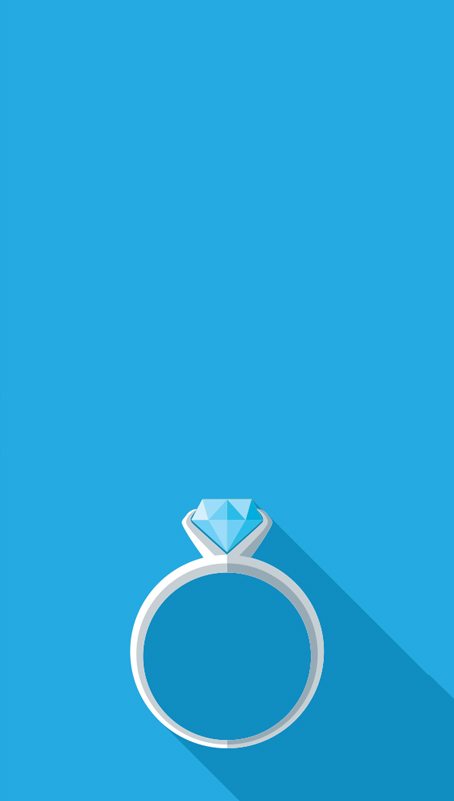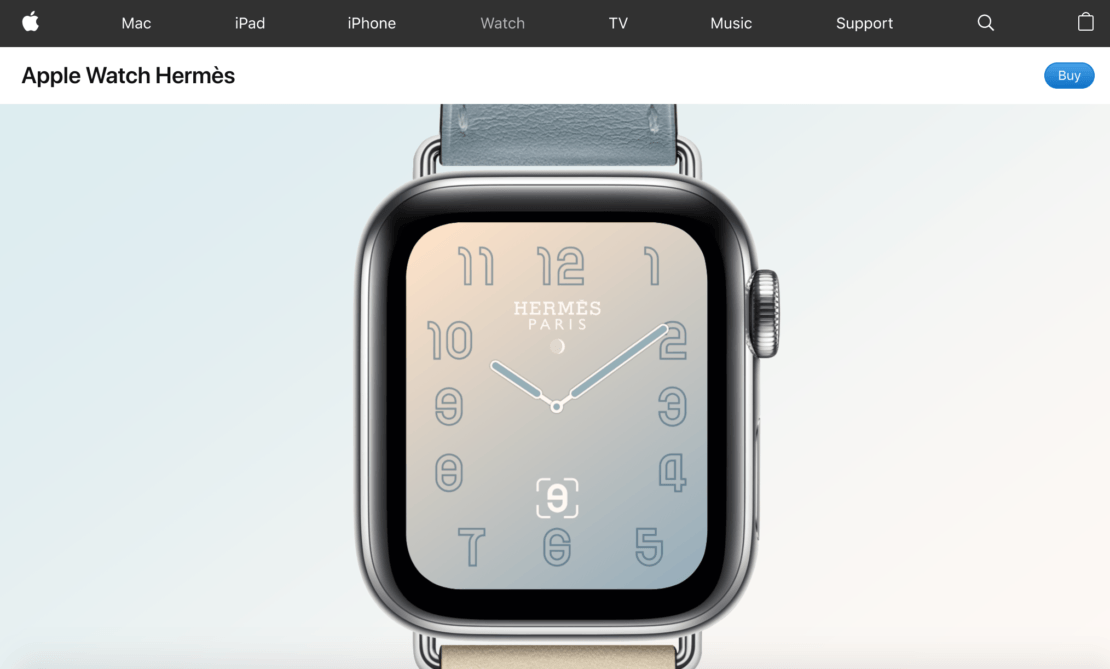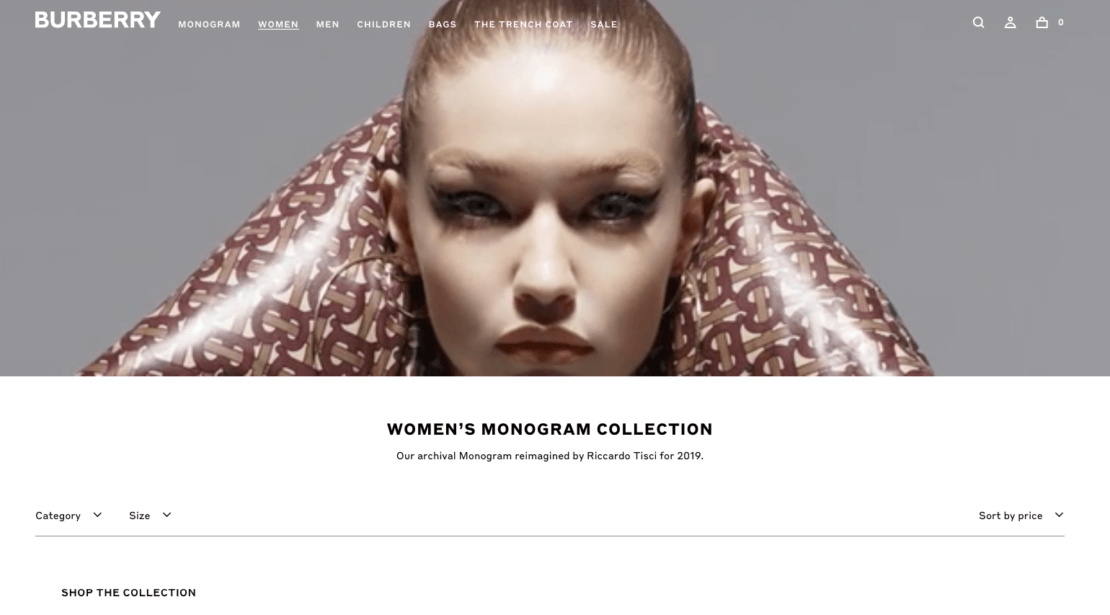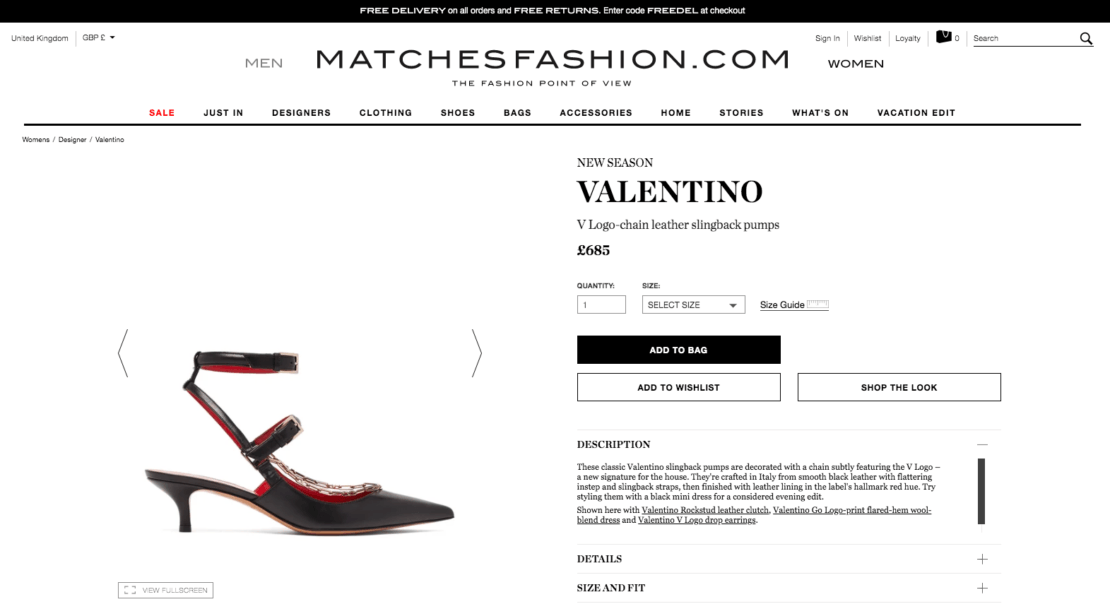EBOOK
Luxury Ecommerce Marketing
Published: Aug 31, 2017

The luxury ecommerce blueprint
Ecommerce and ecommerce marketing is an area of huge potential growth for your luxury brand, but most of us are unaware that around 40% of luxury brands do not currently sell online.
Until recently, luxury retailers only needed to click together their heels and make their merry way to Asia in order to drive growth. But with sales stuttering, expansion in Asia isn’t the simple cure-all it once was. The only place your brand can now achieve the type of growth previously seen in Asia is online.
There’s a growing realization amongst luxury brands that selling online can supplement and reinforce the luxury in-store experience, rather than denigratte it. Even luxury brands like Chanel and Fendi, previously sceptical about the marriage of luxury and e-commerce, are dipping their toes in the fast warming online waters.
In this guide we’ll look at how your luxury e-commerce website can excel while covering the following topics:
- Increasing conversions without devaluing the luxury experience.
- Scaling the luxury experience online
- Luxury brands’ websites – a snapshot
Lift conversions without devaluing the luxury experience
For luxury brands, discounting online can be toxic.
Consumers pay a premium with the expectation that your brand offers exclusivity: umbrella discounting as an ecommerce marketing tactic tarnishes this. Once a product becomes more affordable, its desirability immediately diminishes to those willing to pay top dollar in the first place – your core customers. Taking the step to cut prices also puts you at risk of falling into a cycle of discounting.
Don’t rely on potentially damaging discounts to lift conversions, instead try the following ecommerce marketing strategies:
Free delivery
Encourage tentative buyers to either convert or increase AOV with free delivery. Even with consumers spending proportionately large amounts, offering this ecommerce marketing incentive will increase order values. However, to protect your margins follow the principle of “give/get” by establishing a cart order value the shopper must reach before they qualify for free shipping.
If you’re already offering free delivery, amplify the offer – just make sure it’s clear to your customers. Rather than devaluing the brand, free delivery can be marketed as part of your luxury service.
Click & Collect
Click and collect, or pick up in-store, offers your customers the best of both worlds: the flexibility and convenience of shopping online, along with the chance to sample the luxury in-store experience.
3 in 4 UK consumers have already used click & collect, so offering the service ensures you keep up with your customer’s cross-channel expectations and also gives you the opportunity to push more products in a store.
Keep your existing customers happy
Focusing your ecommerce marketing on your relationships with current customers rather than chasing new customers can pay dividends for your luxury brand.
Offering a personalized service, such as a VIP members club, gives luxury shoppers the exclusivity they crave, whilst making it easier to sell directly to your highest spending customers. Personal shoppers, first option on products and access to exclusive events will make your top customers feel special – and raise your AOVs. (For more on beating the discount cycle, and other challenges fashion brands face check out our guide on fashion eCommerce trends!)
Scaling the luxury experience online
For some of your customers, the sensory, upmarket experience you provide in-store defines your luxury brand. Replicating this experience thorugh your ecommerce marketing can feel like an uphill battle. But your e-commerce site shouldn’t be a lesser imitation of your in-store experience anyway.
Instead, view your website as a chance to express the luxury service you provide – and the values your brand represents – in different ways. Charm consumers with a memorable and unique online experience and gain repeat customers by offering something both ‘regular’ e-commerce sites and physical stores can’t.
Here’s how your brand can go about doing this:
Branded delivery
A fully-customized branded delivery service could be a viable option for more luxury brands. A branded vehicle with a uniformed driver, branded delivery emails and texts may seem like a minor touch. But isn’t that what your luxury service is all about – a combination of the small touches, done perfectly? Branded delivery gives you the chance to offer a truly seamless luxury service from checkout to the customer’s doorstep.
Customization
The world where every luxury brand creates one-off unique pieces for every customer is fanciful. The result is, despite their expense, luxury products are rarely one of a kind – or in some cases, one in 10,000.
By offering customizable products online, you can soothe your customer’s worries that they’ll spend a bundle only to end up with the exact same product as their neighbour. This is an area where luxury combined with some smart ecommerce marketing can trump the in-store experience: a customer can customize a product with the click of a button, trying and testing variations to find the perfect one for them.
Perfect packaging
Far from needless embellishment, packaging is a compelling way for luxury e-commerce retailers to create a memorable experience – one that really wows your customers.
In the e-commerce journey, a product’s packaging is the first opportunity you get to make a physical impact. Use this chance to emphasize your brand values, to bring excitement, an element of suspense and even romance to the final part of the user journey. Exceptional quality packaging consisting of different textures, personalized messaging, unique touches and even scents enables luxury brands to bring a little bit of your in-store experience to a customer’s home.
Bespoke content
Luxury brands can use aspirational imagery and videos in their ecommerce marketing, compelling stories and upcoming events teasers to captivate customers.
Exceptional quality content gives your online customers an emotive experience, immersing them in the ethos and values of your luxury brand. Content also serves as a way to build a connection with your brand followers. For example, if you’re a luxury fashion brand, streaming runway shows online or previewing new lines online is a potent way to engage with customers.
The best luxury ecommerce websites – a snapshot
Apple
With the launch of its much-vaunted watch, Apple repositioned itself in the market as a luxury retailer. The Apple Watch means the brand is now ‘just as much about fashion as it is about function.’ As well as crossing the boundaries between technology and fashion, the Watch, particularly the £12,000 gold edition, has also moved Apple firmly into the luxury market. Apple’s e-commerce store has always leant itself to luxury with its clean lines, crystal clear product imagery and a sleek and uncluttered user journey.

For the Watch, Apple’s e-commerce store really comes into its own. Interactive and intuitive high-resolution imagery gives customers the option to view the product in minute detail. This imagery is complemented by need-to-know information, such as sizing guides, that customers crave. Apple also clearly signpost free delivery and their online chat service – ensuring important details aren’t sacrificed for the sake of design.
Burberry
Burberry is credited as one of ‘the strongest omnichannel players’ in fashion. Its website plays a crucial part in this success and provides an exemplary example of a luxury retailer translating its brand online. The combination of exceptional high-resolution product photography and aspirational product-led videos bring a high-end feel to the site. While other luxury brands’ websites focus heavily on lifestyle-led content, Burberry achieves a potent mixture of content and a coherent buyer experience.

Matchesfashion.com
Multi-brand luxury fashion retailers such as Net-A-Porter and Matchesfashion.com can teach brands valuable lessons about creating a seamless user experience online. Matches’ site consists of clean design, a focus on usability and product imagery as well as emotive but fact-filled copy. Navigation is clear, with a drop-down menu providing access to a clearly segmented list of products. On the product pages users are presented with a selection of zoomable images showing the product from every angle, as well as a video showing the goods on a model.

Product details and size guides are easy to access, while options like guest checkout round off the user-friendly journey. While, unlike luxury retailers, multi-brand sites don’t have to focus on translating an in-store experience online, they have become brands in their own right due to their sleek websites with fantastic usability. Their focus on customers is a reminder to brands that the online luxury user journey is as much about a slick user journey as it is about highly aspirational brand-focused content.
Luxury ecommerce marketing cheat sheet
The luxury landscape
Many luxury brands are still missing out on the enormous opportunity presented by luxury e-commerce – by 2019, the share of B2C e-commerce on total luxury sales worldwide will grow by over a half. The Asian market isn’t the easy win it once was – online is the next high growth area for luxury brands.
Lift conversions without devaluing the luxury experience
Umbrella discounting online tarnishes your luxury brand’s image and decreases exclusivity. Offering free delivery, click + collect and focusing on customer retention rather than acquisition are steps your luxury e-commerce store can take to lift conversions without damaging your brand through discounting.
Scaling the luxury experience online
To scale your brand’s in-store luxury experience online, offer customers a memorable online journey from the point they enter your site to the moment they unwrap their product. Ways to offer this experience include branded delivery, customization, stunning packaging and bespoke content.
Luxury brands’ websites – a snapshot
Providing an uncluttered user experience and the ability to view products in minute detail through intuitive images places a positive emphasis on your luxury goods.
A blend of high-quality content in the form of aspirational high-resolution videos and product images offers a potent user journey when combined with a coherent buyer experience Amplifying free delivery and free returns are still effective even on costly luxury purchases.
However special your content, a clunky user journey will spoil the luxury experience.